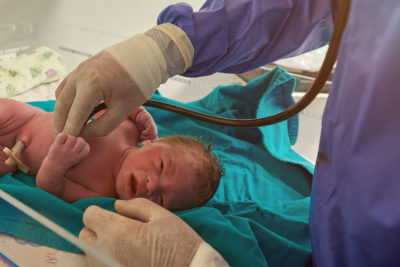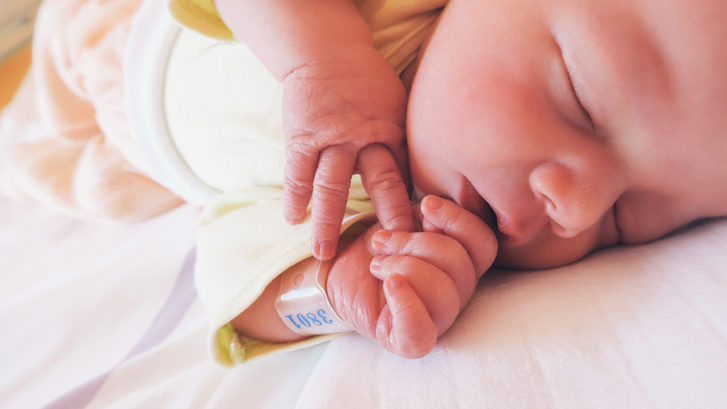In 2018, nearly 3.8 million babies were born within the United States. Most of these infants started their lives with no issues at birth and began achieving typical developmental milestones, yet, there were those whose lives were forever impacted by a birth injury. In the United States, it is estimated that nearly 7 birth traumas occur per 1000 live births, with an incidence rate of approximately 1 in 9,714[i]. Nearly one half are potentially avoidable with proper recognition and anticipation of obstetric risk factors. [ii]
Birth injuries can range from minor, temporary, and self-healing to permanent, catastrophic, and having a lasting impact on the morbidity or mortality of the child. Birth injuries are typically divided into two categories, those resulting from hypoxia and ischemia (a lack of or shortage of oxygen) or injuries resulting from mechanical forces during the process of labor and delivery.[iii]
A birth injury likely to result in litigation is hypoxic-ischemic encephalopathy (HIE). HIE is the most common birth injury claim, generally alleging that intrapartum asphyxia led to long-term neurologic sequelae, including cerebral palsy and/or developmental delay.[iv]
Trying to understand the child’s life, determine what their day is like, how they perform in the school system, and how they interact with their families is a key component of evaluation and outlining resources, treatments, and supports needed for the child’s care continuum.
How will the injury impact life expectancy? What will their life look like after K-12 schooling? While schools are mandated to provide the appropriate environment and services needed to facilitate the child’s learning and development – this only continues until the child is twenty-two years old. Planning and preparation of the child’s care and supports must be made well in advance and outline the child’s care once they are no longer in the school system. Proper planning must also align and support the family’s goals and decisions regarding their child.
In this issue of Insights, we share a sample of a Life Care Plan for a child diagnosed with Hypertonia and Global Development Delay. Hypertonia is a condition in which there is too much muscle tone so that arms or legs, for example, are stiff and difficult to move[v]. The long-term prognosis of a child diagnosed with Hypertonia is dependent on the severity and its cause. Global developmental delay is defined as a child having delays in two or more developmental milestones. At the time of the case, the child was seven years old and is expected to live into their eighties. Delays may include walking, talking, movement skills, and social-emotional development milestones and the delay is continued for at least six months[vi]. Understanding the long-term care and needs of the child requires a complete understanding of the child, the supports provided by family and rehabilitation professionals, and the care needed for the remainder of the child’s life.
When a Nurse Life Care Planner assesses the child, they are also assessing the family functions. Determining the families understanding of the injury, the child’s prognosis for recovery, family dynamics, and understanding the capacity and limits of the primary caregiver. Is the family bilingual? Who works outside of the home and how does that impact care? Is the family a larger extended family with grandparents living in the home, or is it a single parent managing one child or more? It is also important to take into consideration the living environment when determining the needs of the child.

Treatment is treatment, whether in a little body or a big body, what’s key is understanding the long-term effects of the diagnosis and treatment on the child’s life. Going to school and being included in the day to day routines and activities of being a child, a son, or a daughter, are important to consider for maximum quality of life. Reconstructing a day-in-the-life experience is very important in cases with children.
Understanding and planning for the long-term needs of a child who’s experienced a significant birth injury with lasting implications require a deep understanding of their diagnosis, the unique factors surrounding their care, and expertise in the long-term prognosis.
Wondering what you could expect in a Pediatric Life Care Plan? Access the Pediatric Life Care Plan snapshot below. Please keep in mind that the snapshot you access is only a small portion of an actual Life Care Plan.
If you’re an attorney or legal professional managing a birth injury case or any case involving a child, be sure you’re working with a team of professionals who have experience and expertise in the diagnosis, prognosis, and the aligning care needs.
References:
[i] Right Diagnosis from Healthgrades: Statistics about Birth Injury
[ii] Medscape: Birth Traumas
[iii] Clinic in Perinatology: Management of Birth Injuries
[iv] Seminars in Fetal and Neonatal Medicine: Medico-legal implications of hypoxic-ischemic birth injury
[v] National Institute of Neurological Disorders and Stroke: Hypertonia Information Page
[vi] Cerebral Palsy Alliance: Global Development Delay






